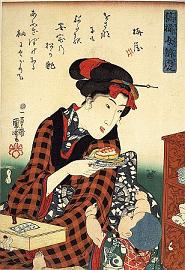If you've ever been exposed to any type of Asian culture, or been a poor college student, you are probably familiar with the beloved Japanese ramen noodles. These noodles have been loved throughout all of Japan since they were first introduced by the Chinese over a century ago.
This dish has proved so popular that four different categories and countless toppings have been created to please the eager customers' unwavering appetite for the noodles. Microwavable "Instant Noodles" were even created in 1958 by Momofuku Ando, which swept not only the nation, but the world, and became a Japanese cultural icon by the 1980s. Restaurants cover the nation where people can go and watch a Japanese chef whip up his regional noodle speciality. There is even a museum dedicated to ramen noodles, and I recently learned, a stadium as well.
If you are a sports fan, than the word stadium might conjure up certain images in your head. While the Ramen Stadium in Japan isn't exactly the typical stadium a sports fanatic may picture- it is pretty epic in its own right.
Eight popular ramen restaurants gather in one location in Fukuoka, Japan to provide the ultimate ramen experience. Your initial reaction might be that eight places serving the same dish seems repetitive, but each restaurant offers a different style of broth and noodles, so you could easily visit each and never eat the same food!
Has your family received a Nook, Kindle or iPad this year? Find Fujimini Adventure Series award-winning books here. Great family-friendly gifts
Has your family received a Nook, Kindle or iPad this year? Find Fujimini Adventure Series award-winning books here. Great family-friendly gifts
A souvenir shop has also been added, so when you're done trying the noodles you can go and purchase it from the selection of specialty ramens the store offers! The little shop also offers a Ramen gift pack that you'll only be able to find at this location.
If you ever visit Japan, your cultural experience is not complete without a visit to Ramen Stadium, so be sure to add that to the list of places to go!
To learn more about the cultural and diversity taught at Fujimini Island, please click here.
To learn more about the cultural and diversity taught at Fujimini Island, please click here.
Happy ramen eating!



















